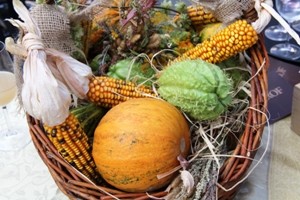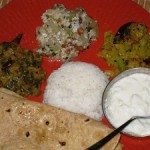Health Benefits of Bottlegourd
The varied health benefits of bottlegourd have long been recognized in Indian medicinal systems like Ayurveda. Bottlegourd has wonderful health-promoting and curative properties and is used as a remedy for many different ailments.
The bottlegourd belongs to the cucumber family and originated in Africa, and is now available in most parts of the world. Also known as calabash, cucuzza, sorakaya, lauki, doodhi, and ghiya in various languages, this vegetable comes in different shapes, the most common being the bottle-shaped (hence the name) and round. The sizes vary from six inches in length to more than six feet.
In the US, bottlegourds are available in farmer’s markets, Asian grocery stores, as well as mainstream markets.
This is a popular vegetable in Indian cooking. When cooked, bottlegourd can be slightly sweet or bland, and lends itself to a variety of dishes.
Dried bottlegourds are used to make water bottles, bowls, musical instruments, and decorative ornaments.
Bottlegourd and Health
Bottlegourd contains a lot of water – almost 96 percent is water, and as such is light and easy to digest. Bottlegourd is commonly used for treating indigestion, constipation, and diarrhea. Bottlegourd juice with a pinch of salt is also used to treat dehydration caused by diarrhea.
The water content in bottlegourd along with the high fiber content helps with constipation as well.
Low in calories (100gms has 12 calories) and low in fat, bottlegourd is a wonderful vegetable to include in any weight-loss diet.
Regular use of cooked bottlegourd is considered an effective remedy for tuberculosis, and for boosting immunity.
When consumed daily, bottlegourd juice with a dash of lemon juice can help reduce high blood pressure and keep the heart strong.
Bottlegourd juice mixed with sesame oil in a 50:50 ratio and applied over the scalp every night is recommended as a natural remedy for insomnia. Cooked leaves of the bottlegourd plant are also considered to be effective.
Bottlegourd has a calming influence and is effective in treating hysteria; fresh bottlegourd pulp should be applied on the forehead of the patient.
Cooking Tips
- Select small, tender, and firm bottlegourds (light green and fresh-looking); prick the skin, and if it’s thin, it’s tender. You can use tender bottlegourds with the peel and tender seeds. To use mature bottlegourd, remove the peel and seeds.
- Taste the bottlegourds before cooking, as they can sometimes be bitter.
- Wrap in plastic and refrigerate to keep the bottlegourds fresh.
- Use them for curries, soups, salads, chutneys, jams or desserts. Their neutral taste lends itself to a variety of dishes, both savory and sweet.
Sources
- http://www.arhomeandgarden.org
- Home Remedies for Common Ailments (H.K. Bakhru)
- Handbook of Nutrition and Dietetics (Dr. Jyoti Singh)
Last updated on October 14, 2015
Category: Health








